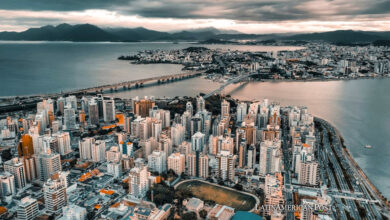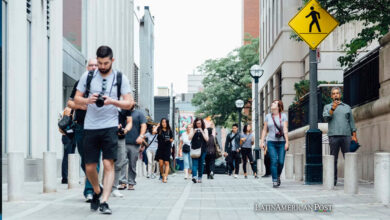Exposure to Covid-19 by plane would be less than in an office
This is how IATA explains it in its report, in which it compiles its own information and that of the largest aircraft manufacturers in the world
This is how IATA explains it in its report, in which it compiles its own information and that of the largest aircraft manufacturers in the world.

Report indicates that airplane passengers may be safer from possible exposure to the virus. / Photo: Unsplash
LatinAmerican Post | Thomas Handley
Listen to this article
Leer en español: Exposición al Covid-19 en avión sería menor que en una oficina
The air passenger transport activity, although still limited in many countries due to the pandemic, continues to operate. Whether with repatriation, tourism, or work flights, millions of passengers comply with the protocols indicated both within the airport and on the aircraft. However, a warning light was lit regarding the supposed "secrecy" of the planes, and the proximity of the passengers on board of them. Given this, the International Air Transport Association (IATA, for its acronym in English), has prepared a report to bring calm to the users of said transport.
The IATA report
In the report prepared by IATA, an estimated 1,200 million passengers have flown since the beginning of 2020. In that period, there have been 44 cases of Covid-19 associated with a plane trip. This figure includes confirmed, probable and potential cases, and even in a hypothetical case in which there were 90% of unreported cases, the contagion rate would be one case in 2.7 million passengers. For added peace of mind, he even explains that most of these cases have occurred before the use of a mask on board was mandatory.
To substantiate these numbers, IATA has indicated that there are natural measures on an aircraft that reduce the probability of contagion from its passengers. Among them, he mentions the limitation of movement of the people on board, the configuration of seats that avoid face-to-face interaction, and the barrier that their backs represent. In addition, the airflow design directs the airflow from top to bottom rather than back and forth. Said air, which is recycled between 20 and 30 times an hour inside the cabin, passes through HEPA filters, which trap 99.9% of bacteria and microbes.
Computational fluid dynamics research from @Airbus, @Boeing & @embraer demonstrates that combining the aircraft’s existing design features with mask-wearing creates a low-risk environment for #COVID19 transmission.
See more https://t.co/muGdLHs6KP#FlySafe #ReadyToFly pic.twitter.com/fS4VJVT6XN
— IATA (@IATA) October 8, 2020
In addition, the report issued by IATA also includes reports from the three largest aircraft manufacturers. These also bring peace of mind to passengers, comparing their infrastructure to other closed environments that we regularly frequent.
Also read: The mental health impact of pandemics for front line health care staff
Airbus
Bruno Fargeon, an Airbus engineer, says that after numerous simulations in which parameters such as airspeed, direction, and temperature were calculated, it was found that the environment inside his aircraft is safe. Exposure to contagion on board, even sitting next to each other, is less than standing 1.8 meters away in an office or classroom.
Boeing
For his part, Dan Freeman, chief engineer for Confident Travel (a Boeing initiative), presented the results of the analyzes made by his company. With a study focused on the movement of particles in the cabin when coughing and breathing, it was concluded that sitting in an aircraft next to another passenger (and even in the center seat) is equivalent to maintaining a distance of two meters relative to another person in a typical building.
Embraer
Finally, Luis Carlos Affonso, Senior Vice President of Engineering, Technology, and Strategy at Embraer, explained the methods and results of the manufacturer's research. By positioning at various points on board their different aircraft models, the airflow scenarios were analyzed. Emphasizing the need for air travel and its importance in connecting loved ones, Affonso concluded that the cabin of a commercial aircraft is one of the safest places in the world in the context of the pandemic.




